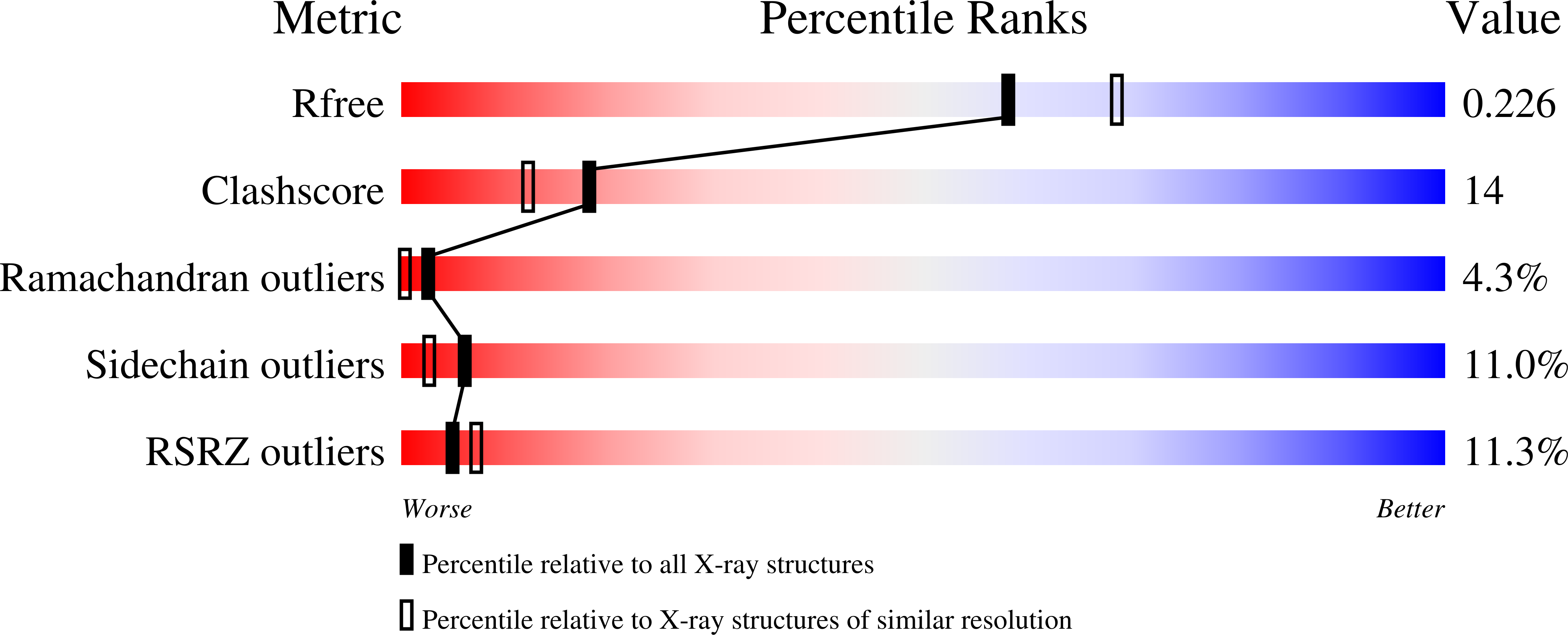IpaB-IpgC interaction defines binding motif for type III secretion translocator
Lunelli, M., Lokareddy, R.K., Zychlinsky, A., Kolbe, M.(2009) Proc Natl Acad Sci U S A 106: 9661-9666
- PubMed: 19478065
- DOI: https://doi.org/10.1073/pnas.0812900106
- Primary Citation of Related Structures:
3GYZ, 3GZ1 - PubMed Abstract:
The delivery of virulence factors into host cells through type III secretion systems is essential for enterobacterial pathogenesis. Molecular chaperones bind specifically to virulence factors in the bacterial cytosol before secretion. Invasion plasmid gene C (IpgC) is a chaperone that binds 2 essential virulence factors of Shigella: invasion plasmid antigens (Ipa) B and C. Here, we report the crystal structure of IpgC alone and in complex with the chaperone binding domain (CBD) of IpaB. The chaperone captures the CBD in an extended conformation that is stabilized by conserved residues lining the cleft. Analysis of the cocrystal structure reveals a sequence motif that is functional in the IpaB translocator class from different bacteria as determined by isothermal titration calorimetry. Our results show how translocators are chaperoned and may allow the design of inhibitors of enterobacterial diseases.
Organizational Affiliation:
Department of Cellular Microbiology, Max Planck Institute for Infection Biology, Charitéplatz 1, 10117 Berlin, Germany.
















